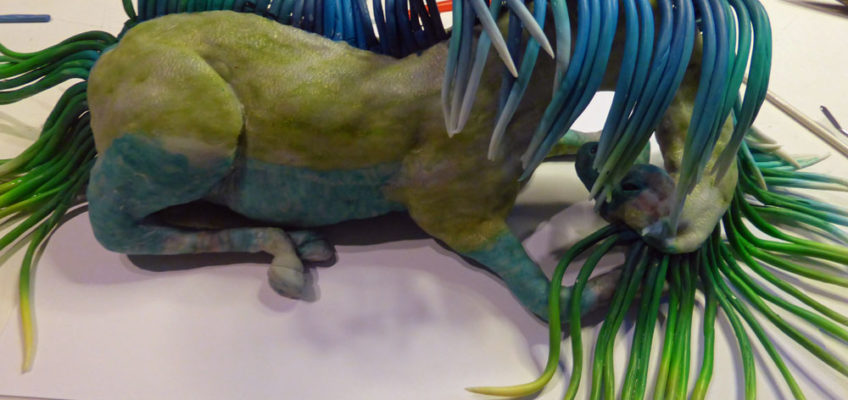It takes a lot of time to create a Mosebacke Horse Sculpture for the simple reason that every detail is unique to that particular horse. And every detail is also carefully crafted by hand. Not two Mosebacke Horse Sculptures are the same.
It takes about fifteen hours to create a Mosebacke Horse Sculpture. I create about one horse a week. That means that I either work for eight hours per day during a weekend or that I work for about two hours every night after my regular work for a whole week. Then of course there are horses that can be created a little faster if everything runs smoothly, and horses with a steeper curve that takes more time. One of them – that I am returning to because it has so many challenges – has so far taken about 40 hours, and it will probably take at least about five hours more. But it may also take about fifteen hours before the horse is like I want it to be.
So that is why a Mosebacke Horse Sculpture is a unique piece of art that costs a bit more than craft where each item takes much less time to produce.
I usually divide the work with a horse sculpture into five parts; planning, the first structure and design, fine adjustment, surface and finishing.
Planning
Sometimes the feeling is that this part of work is very fast, but in fact, I have been thinking about the different types of challenges and solutions for a very long time. Inspiration and ideas can come from almost anywhere, and mostly the inspiration comes from things that do not really have to do with horses. It is also at this stage that I make sketches and select color schemes.
First structure and design
All Mosebacke Horse Sculptures have a skeleton, an armature. It usually consists of steel wire, but sometimes I use bamboo sticks. The first approach is to create a foundation with the right proportions and shape. Usually I build this foundation of so-called scrap clay. That is clay that has become mixed in color, often leftovers from the canes.
Fine adjustment
When I am sure that the basic form is right I start the fine adjustments. It is a very time consuming part of the work where I repeatedly go over the horse and ensure that every detail is exactly as I want it. Here I create, for example, details on the hooves and face and ensure that the body is just as smooth – or uneven – I want to give the expression that I strive for.
The surface
Here I create what you see in terms of colors and patterns on the actual horse. MostIy I do not paint my Mosebacke Horse Sculptures at all. All colors and shades are created directly in the clay with the clay. I mix the colors of the clay rather like mixing watercolor or oil paints. By using different techniques, I can create stunning effects and complex patterns. The creation of a complex cane can take many hours of precision work.
Finishing
A horse sculpture is not finished just because clay is cured. Now it’s time for the time-consuming finishing work. Depending on what techniques I used and what effect I want to achieve I do different things. Usually, I wet sand the horse over and over again and also improve the details that have not performed exactly as I want them to. Some horses I polish with a coarse cloth so that they get a porcelain-like shine, others I lacquer to a deep gloss. Still others will be a bit more rough in expression and some are treated with dry pastels to give deep and matte color effects. Sometimes I use acrylic paint to enhance unevenness and shadings.


Lämna ett svar